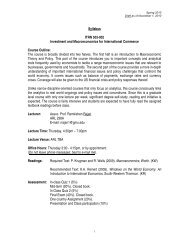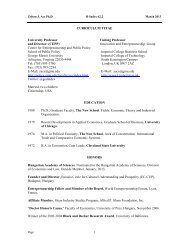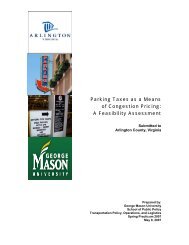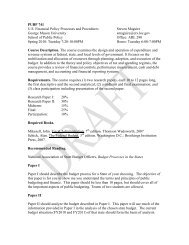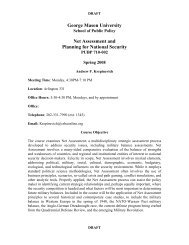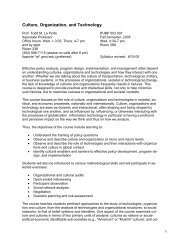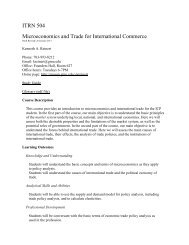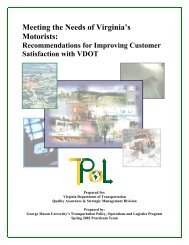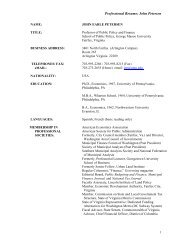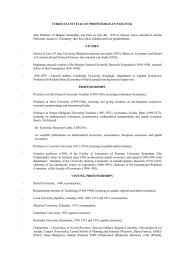Cost Benefit Analysis of Washington-Richmond High-Speed Rail
Cost Benefit Analysis of Washington-Richmond High-Speed Rail
Cost Benefit Analysis of Washington-Richmond High-Speed Rail
You also want an ePaper? Increase the reach of your titles
YUMPU automatically turns print PDFs into web optimized ePapers that Google loves.
<strong>Cost</strong> <strong>Benefit</strong> <strong>Analysis</strong> <strong>of</strong> <strong>Washington</strong>-<strong>Richmond</strong> <strong>High</strong>-<strong>Speed</strong> <strong>Rail</strong> Spring 2010<br />
14<br />
some dedicated and some shared track using positive train control technology. Intended to relieve<br />
highway and, to some extent, air travel capacity constraints.<br />
• Emerging HSR: Developing corridors <strong>of</strong> 100–500 miles, with strong potential for future HSR<br />
regional and/or express service. Top speeds <strong>of</strong> up to 90–110 mph on primarily shared track<br />
eventually using positive train control technology, with advanced grade crossing protection or<br />
separation. Intended to develop the passenger rail market, and provide some relief to other modes.<br />
• Conventional <strong>Rail</strong>: Traditional intercity passenger rail service <strong>of</strong> more than 100 miles with as few<br />
as one to as many as 7–12 daily frequencies; may or may not have strong potential for future HSR<br />
service. Top speeds <strong>of</strong> 79 mph to 90 mph generally on shared track. It is intended to provide travel<br />
options and to develop the passenger rail market.<br />
The above definitions evaluate HSR design potential based on population centers and achievable<br />
speeds.<br />
Today, the study corridor is described as a conventional and aged rail line that requires many<br />
improvements to operate HSR passenger service. As shown in the 2009 population map, Figure 3-2, the<br />
study corridor contains city population concentrations within travel distances desired for HSR. The<br />
study corridor, is best described as an emerging HSR, especially since the corridor length is<br />
approximately 100 miles and design speeds are between 90 -110 mph.<br />
Figure 3-2: 2009 Population Map



